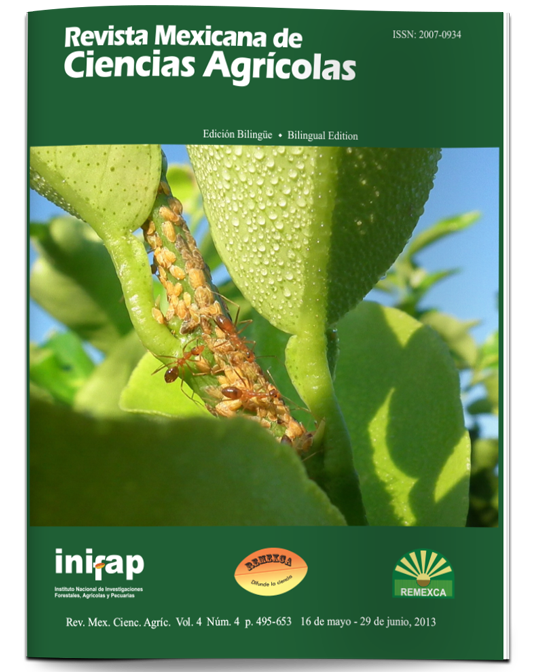Exploring native corn germplasm in central and southern Tamaulipas, Mexico
DOI:
https://doi.org/10.29312/remexca.v4i4.1196Keywords:
Zea mays L., Tamaulipas, genetic resources, landraces, preservation and collection of germplasmAbstract
Mexico is a nation that is inconceivable without the existence of corn. The species was domesticated 9000 years ago and has a wide genetic diversity. In several states, such as Tamaulipas, there is, even today, a considerable diversity of corn varieties that have not been explored or studied enough and which must be collected as a source of germplasm. The aim of this study was to document the collection of native corn populations in central and southern Tamaulipas for their conservation, characterization and utilization in various future breeding programs. Between 2001 and 2006, we collected 215 native corn populations. An intense exploration was carried out in 17 municipalities in central and southern Tamaulipas. The native populations obtained come from the municipalities of Ocampo (25%), Tula (12%) and San Carlos (10%), while 53% were obtained in 14 other municipalities. The collected germplasm is conserved ex situ at the Autonomous University of Tamaulipas and the Postgraduate College of Agricultural Sciences for characterization and evaluation. Germplasm collections, being a source of genetic diversity, should be characterized for an efficient management and an effective exploitation that allows improving agricultural crops and productivity in the Tamaulipas region and in other regions of the country. There is the possibility that previously reported germplasm has been lost through the years, so that collections of native corn should continue, exploring other areas and incorporating to the bank other native populations that should be preserved for future use.
Downloads
Downloads
Published
How to Cite
Issue
Section
License
The authors who publish in Revista Mexicana de Ciencias Agrícolas accept the following conditions:
In accordance with copyright laws, Revista Mexicana de Ciencias Agrícolas recognizes and respects the authors’ moral right and ownership of property rights which will be transferred to the journal for dissemination in open access. Invariably, all the authors have to sign a letter of transfer of property rights and of originality of the article to Instituto Nacional de Investigaciones Forestales, Agrícolas y Pecuarias (INIFAP) [National Institute of Forestry, Agricultural and Livestock Research]. The author(s) must pay a fee for the reception of articles before proceeding to editorial review.
All the texts published by Revista Mexicana de Ciencias Agrícolas —with no exception— are distributed under a Creative Commons License Attribution-NonCommercial 4.0 International (CC BY-NC 4.0), which allows third parties to use the publication as long as the work’s authorship and its first publication in this journal are mentioned.
The author(s) can enter into independent and additional contractual agreements for the nonexclusive distribution of the version of the article published in Revista Mexicana de Ciencias Agrícolas (for example include it into an institutional repository or publish it in a book) as long as it is clearly and explicitly indicated that the work was published for the first time in Revista Mexicana de Ciencias Agrícolas.
For all the above, the authors shall send the Letter-transfer of Property Rights for the first publication duly filled in and signed by the author(s). This form must be sent as a PDF file to: revista_atm@yahoo.com.mx; cienciasagricola@inifap.gob.mx; remexca2017@gmail.
This work is licensed under a Creative Commons Attribution-Noncommercial 4.0 International license.



